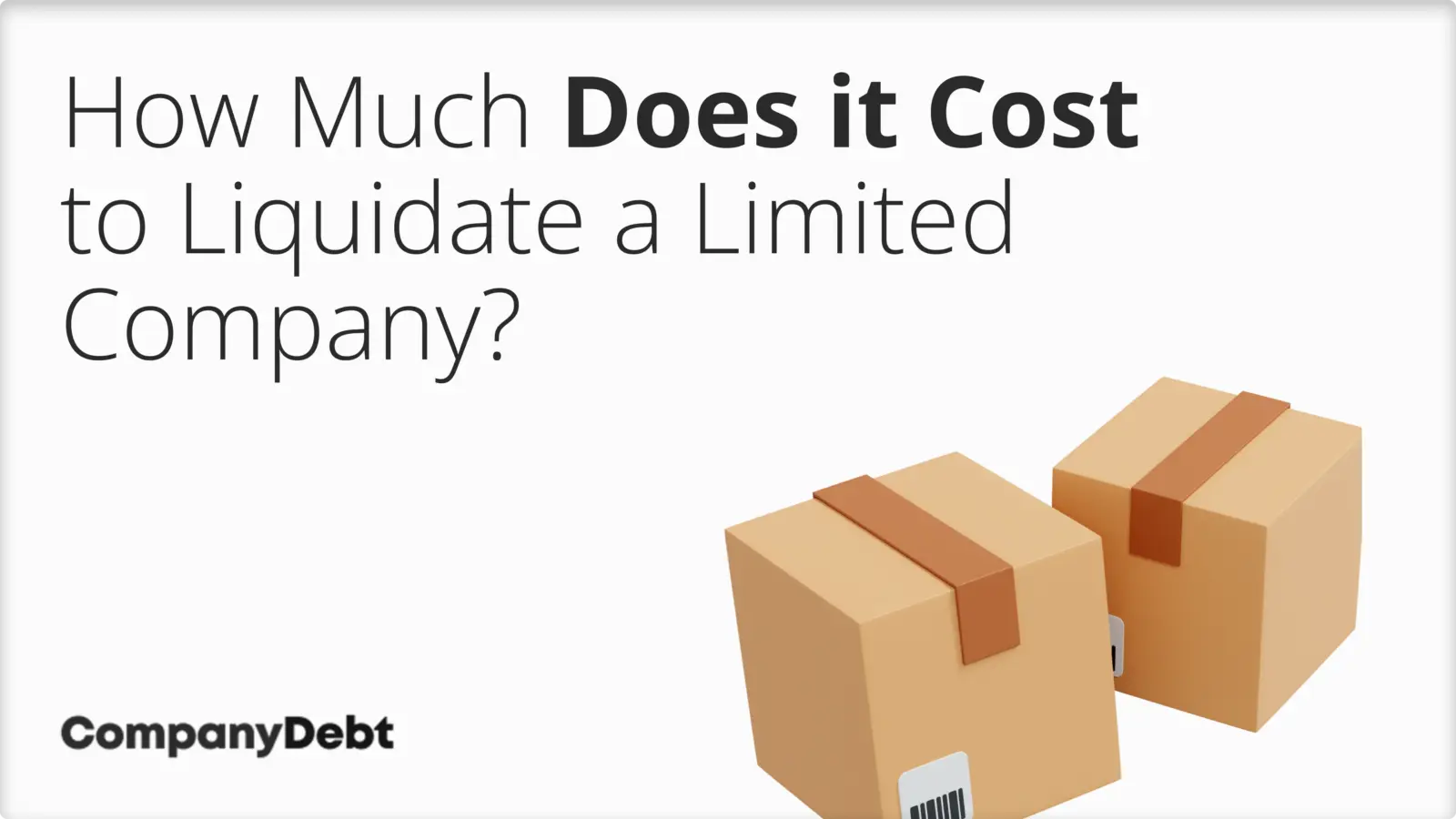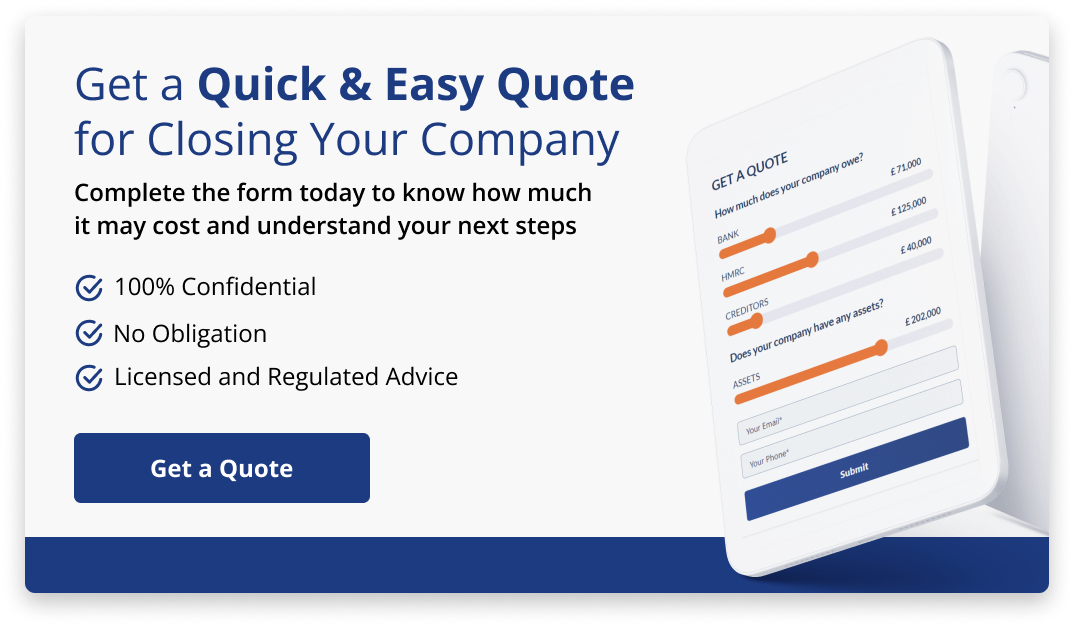
How Much Does it Cost to Liquidate a Limited Company?
Discover the costs involved in liquidating a limited company, including professional fees and legal expenses.
What’s the Cost of Liquidating a Company?
There’s no set cost to liquidate a company, but in most cases, expect to pay between £4,000 and £6,000 plus VAT, depending on the complexity of the situation.[1]Trusted Source – R3 – Insolvency Fees.
These fees are paid to licensed insolvency practitioners appointed to handle the liquidation process and tend to increase based on the amount of time and work involved.
Larger companies with more assets or complex winding-up needs may incur total liquidation costs above £10,000-£15,000 or more in some cases.
The cost of a Members’ Voluntary Liquidation (MVL)—used to close solvent companies with assets over £25k—is typically lower than that of a CVL, but again, this will vary depending on the amount of work required.
| Cost Type | Estimated Range | Description |
|---|---|---|
| Insolvency Practitioner Fees | £4,000 – £6,000+ | Fee for the licensed professional handling the liquidation process. They manage the company’s assets, pay creditors, and ultimately dissolve the company. |
| Solicitor’s Fees (Optional) | £1,000 – £3,000 | Legal guidance and filing paperwork (may not be required for small companies). |
| Disbursement Costs | £500 – £2,000 | Third-party expenses like advertising the liquidation or asset valuation. |
| Court Fee (if applicable) | £280 | Fee for filing a winding-up petition with the court. |
| VAT (on most fees) | 20% | Value Added Tax applied to most liquidation costs. |
What Additional Costs are Incurred in Liquidation?
In addition to the liquidator’s fees, you might face the following additional costs:
- £1,000 to £3,000 for solicitor’s fees: Legal guidance and filing necessary paperwork (not always required for small companies)
- £500 to £2,000 for disbursement costs: Third-party costs such as advertising the liquidation or valuing assets
- £280 court fee: For a winding-up petition if the liquidation process involves a court
- 20% VAT: Applicable on most of these fees

Who Pays the Costs of Liquidation?
In a voluntary insolvent liquidation, the costs of liquidation are typically covered by the sale of the company’s assets. Should these assets be inadequate, the directors or shareholders of the company might be required to pay the remaining liquidation costs out of their own pockets.
In compulsory liquidation cases, the party initiating the process (by petitioning for the winding up of the indebted company) bears the burden of paying the liquidation fees[2]Trusted Source – GOV.UK – Wind up a company that owes you money.
In a Members’ Voluntary Liquidation (MVL), the liquidation costs are taken from the sale of company assets. Once these costs are paid, the remaining funds are distributed to the shareholders.

What do the Liquidation Costs Cover?
Liquidation costs cover the expenses incurred by the liquidator in the process of formally closing a company. These costs can include:
- Liquidator’s fees: The liquidator’s fees are typically charged on a fixed basis but may also be charged as a percentage of the assets realised.
- Creditors’ meeting costs: The liquidator is required to call a meeting of the company’s creditors to inform them of the liquidation process and to answer any questions they may have. Liquidation costs also cover the costs associated with organising and holding this meeting.
- Statement of Affairs preparation costs: The liquidator must prepare a Statement of Affairs document, which outlines the company’s financial position in detail. The costs associated with preparing this document are also covered by liquidation costs.
- Redundancy payments: If the company has employees, the liquidator may be responsible for making redundancy payments to them. Liquidation costs also cover the costs of these payments.
- Dispute settlement costs: The liquidator may need to settle any outstanding disputes or contracts that the company has.
- Debt collection costs: The liquidator is responsible for collecting any money that is owed to the company.
- Government authority notification costs: The liquidator is required to notify certain government authorities, such as HMRC, Companies House, and the Insolvency Service, of the liquidation.
- Transaction investigation costs: The liquidator may need to investigate transactions that took place in the period leading up to the liquidation.
- Asset valuation and realisation costs: The liquidator is responsible for valuing and realising the company’s assets which involves independent valuation experts in most cases.
What if my Company Cannot Afford the Costs of the Liquidation?
If your company cannot afford liquidation costs, options include negotiating a payment plan with the liquidator, using company assets, borrowing funds, or using personal funds.
There are a few different ways that liquidation fees can be paid:
- Immediately: The company may have enough cash on hand to pay the liquidation fees immediately.
- Over time: The liquidator may agree to spread out the payments over time.
- Contingency: The liquidator may agree to defer payment of their fees until the company’s assets have been sold and the proceeds distributed to creditors.
- Partial upfront payment: The company may make a partial upfront payment to the liquidator, with the remaining balance due once the company’s assets have been sold.
However, be aware that if the company’s assets are insufficient, directors may risk personal liability for its debts. If these options fail, the liquidator might seek a compulsory winding-up by the court.
Can Directors be Personally Liable for Liquidation Costs?
Directors are not typically personally liable for liquidation costs. These costs are usually covered by the company’s assets. However, if there are no company assets or cash available, directors may need to pay from their personal funds.
Additionally, directors can be personally liable if they have given personal guarantees for company debts or if found guilty of wrongful or fraudulent trading, potentially making them responsible for the company’s debts, including liquidation costs.
Thinking of Liquidating Your Company?
At Company Debt, our licensed insolvency practitioners provide transparent, competitive fees and tailored solutions to help you navigate the liquidation process with clarity and confidence.
If you need help understanding the best way forward for your company, use the live chat during working hours, or call us on 0800 074 6757. We’ve helped 1000’s of directors navigate difficult financial circumstances.
FAQs on Liquidation Costs
What assets can be used to pay liquidation costs?
Any company assets like property, equipment, vehicles, stock, debtors and intellectual property may be sold by the liquidator to cover costs.
Can I Negotiate Liquidation Costs?
Yes, you can negotiate the fees with your insolvency practitioner. However, lower fees may limit the amount of personalized service and advice you receive.
Is VAT Applicable to Liquidation Fees?
Yes, VAT is usually applicable to liquidation fees and is an additional cost to consider.
How Do I Choose an Insolvency Practitioner Based on Cost?
While cost is an important factor, also consider the practitioner’s experience and reputation. A less expensive practitioner might not offer the quality of service your situation requires.
The primary sources for this article are listed below, including the relevant laws and Acts which provide their legal basis.
You can learn more about our standards for producing accurate, unbiased content in our editorial policy here.
- Trusted Source – R3 – Insolvency Fees
- Trusted Source – GOV.UK – Wind up a company that owes you money








